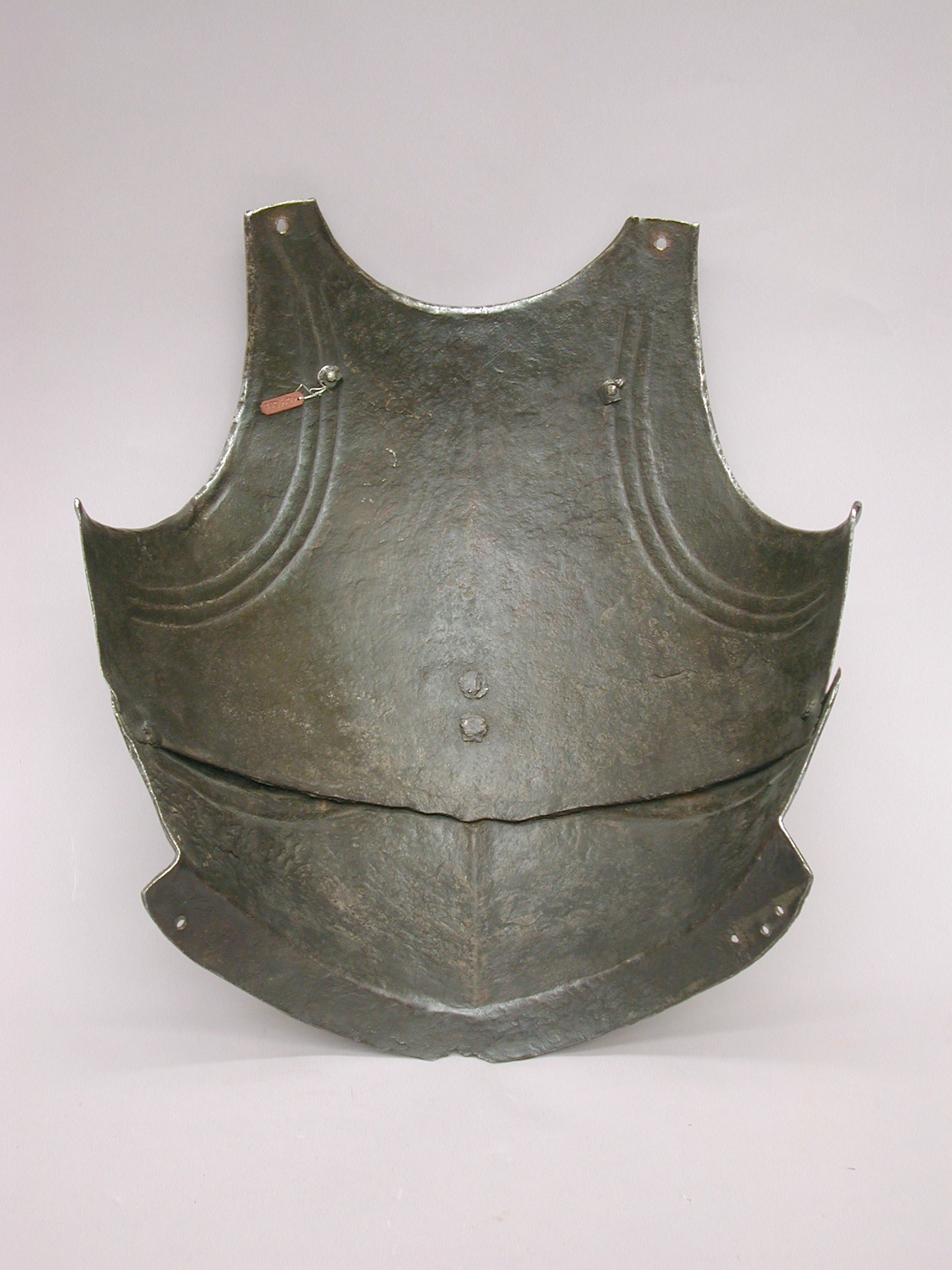Breastplate
Not on view
This breastplate is made from two parts, held together by four star-shaped rivets. The deeply scooped neckline and the arm-holes have outward-turned borders; the lower part of the breast is sharply ridged and sweeps up into a central squared-off point with twin cutouts at the top. The edges of the lower plate are paralleled by two shallow embossed ridges. The waist lames are missing, but holes indicate they were once attached. In the upper part of the upper breast, two star-shaped rivets indicate where shoulder straps were once attached.
Throughout the fifteenth century breastplates were made in two parts, loosely riveted together in the German fashion or attached to one another by straps and buckles in the Italian fashion, to allow extra mobility of the body. The cuirass––breastplate and backplate––was the last element of body armor added to the complete "knight in shining armor." This was not for lack of technical dexterity on the part of the armorers, because skillfully articulated and jointed arm and leg defenses of plates were fully developed by the middle of the fourteenth century, but it seems to have been a reluctance of the knights to encase their torsos in unyielding plates. It was not before the beginning of the fifteenth century that knights were willing to accept the confining cuirass. The loose connection between the two sections of the breastplate was a compromise which made it more acceptable by permitting a small amount of movement.
Due to rights restrictions, this image cannot be enlarged, viewed at full screen, or downloaded.
This artwork is meant to be viewed from right to left. Scroll left to view more.



